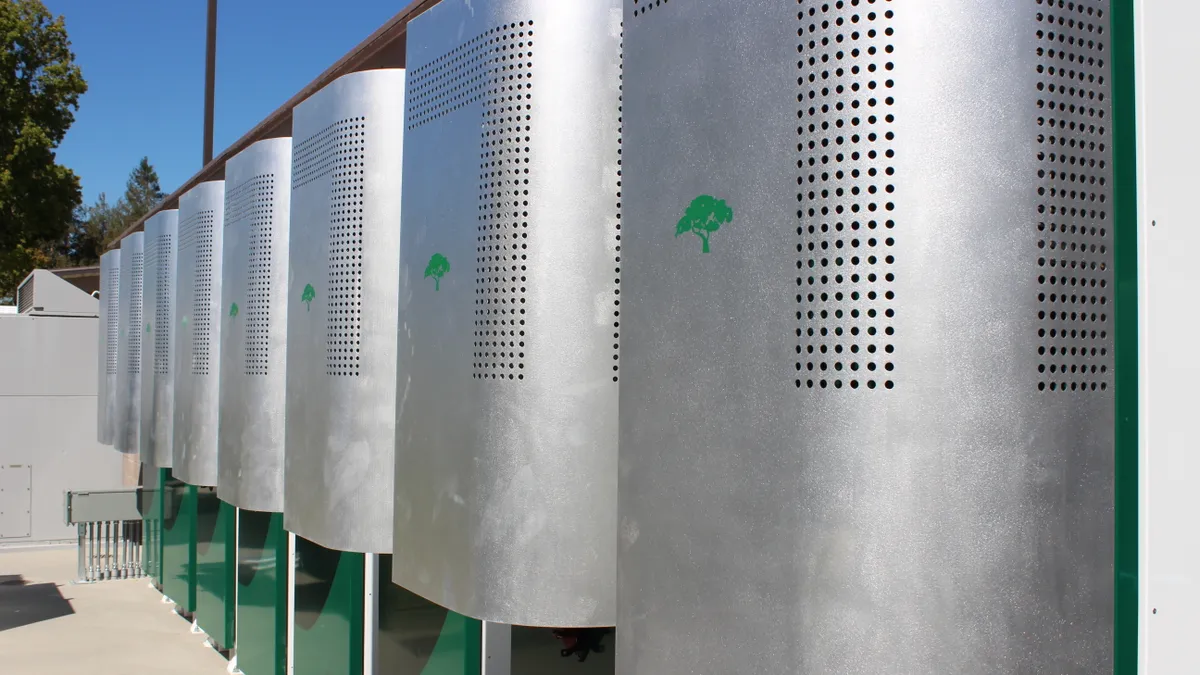Dive Brief:
-
The U.S. Department of Energy on Wednesday announced a new program to help develop and bring to market the next-generation of energy storage technologies.
-
The Energy Storage Grand Challenge is aimed at ensuring the U.S. is a global leader in storage with a domestic manufacturing supply chain by 2030. This would involve shedding dependence on foreign storage raw materials by addressing research and development, workforce development, valuation and other challenges in the sector.
-
The program has the potential to ramp up a full range of innovative work from the early research stage, according to Arjun Krishnaswami, policy analyst with the Natural Resources Defense Council — but "the devil will be in the details of how they design the program, whether it's sufficiently funded and whether they really follow through on these categories of work," he told Utility Dive.
Dive Insight:
Plunging lithium-ion battery costs and better performance have pushed energy storage technologies to the forefront of the decarbonization movement. Lithium-ion is already reducing the need for natural gas generation, according to a report from the Rocky Mountain Institute (RMI). The group found that some existing natural gas plants could be more expensive than a mix of storage, renewables, efficiency and demand response as early as 2021.
"The department has a bunch of different workstreams on different energy storage technologies. The biggest success story is lithium-ion batteries, which have come down in cost significantly, in no small part because of DOE investment in early-stage research and commercializing those technologies. So these programs are really important," Krishnaswami said.
The DOE program will use "a coordinated suite of research and development funding opportunities, prizes, partnerships and other programs" with an eye to transforming the storage sector by 2030. Its goals include developing new technologies, carrying them from the research phase to private sector adoption and creating a value proposition for these technologies, while also reducing U.S. dependence on foreign raw material and improving the recyclability of storage components.
There are a range of storage technologies that require more investment, according to Krishnaswami — flow batteries, which can easily be scaled up; pumped hydro, thermal storage and compressed air, which have longer durations; and hydrogen. There are also aspects of lithium-ion deployment that warrant more attention, especially in terms of addressing operational and safety issues that have cropped up with facilities that couple lithium-ion and renewables — how best to operate these systems, optimal designs, as well as recycling and recovering valuable materials from batteries at the end of their life.
"All of those pieces within lithium-ion batteries still merit significant investment, because they're challenges we haven't solved yet," he said.
The DOE plans to release requests for information through which stakeholders can weigh in on the program's scope, and will conduct workshops over the next few weeks to discuss the potential and obstacles faced by various storage technologies.
"This type of government R&D and commercialization and de-risking support is critical, and I think it's something that the U.S. has done a really successful job at in the past," Charlie Bloch, principal at RMI, told Utility Dive. He likens the program to the DOE's 2011 SunShot initiative, which sought to reduce solar costs by 75%.
On the flip side, supporting R&D, commercialization, data sharing and technology validation won't be enough without the scale of demand necessary to support investment in plants to build storage domestically, Bloch said.
"What would be even more encouraging, whether it's the DOE, federal government, state utility commissioners or FERC, is [if they] really put their shoulder against the stone" to shore up demand and provide regulatory clarity on the participation of storage in wholesale and retail markets, he said.















